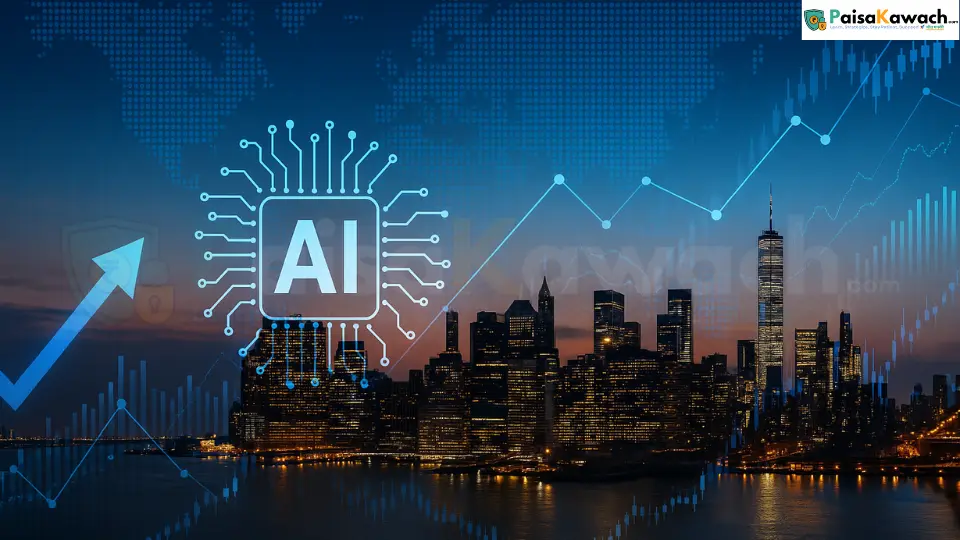By PaisaKawach Team | July 27, 2025

In mid‑2025, equity markets have delivered a remarkable surge—driven by a concentrated rally in AI‑related stocks. Investors are increasingly asking: can AI‑powered companies really ignite the next global market upswing? As chipmakers like Nvidia reach dizzying new highs and tech giants escalate AI spending, the stage is set for potential acceleration—or abrupt reversal—depending on macro dynamics.
UBS analysts forecast global annual AI capital expenditure will expand to around $360 billion in 2025, rising another 33% in 2026. This is not hype—the fuel behind that unstoppable infrastructure demand is real. Taiwan Semiconductor (TSMC), for example, grew AI‑related revenue by 44% year‑over‑year—highlighting robust enterprise adoption.
Nvidia recently crossed the $4 trillion market cap threshold, cementing its role as the keystone of the AI economy. With over 90% market share in datacenter GPUs, Nvidia’s explosive growth is powering much of the broader tech uptick.
The "Magnificent Seven" (Alphabet, Microsoft, Nvidia, Meta, Amazon, Apple, Tesla) now represent roughly one‑third of S&P 500 market cap. Their collective earnings, buoyed by AI, have served as the engine of the market’s climb in 2025.
A new tool, the Capability Realization Rate (CRR), attempts to quantify how much of AI’s promise is already priced into stock valuations—and how much is yet to materialize. With valuations stretched for many AI plays, the margin for error is minimal.
While AI incumbents soar, broader sectors like consumer, industrials, and cyclicals lag—highlighting the uneven nature of the market rise.
“This isn’t a broad‑based rally—it’s supercharged by AI infrastructure makers and mega‑caps,” said one market watcher, describing it as a “selective boom.”
Some investors warn about complacency: low volatility indices, high margin debt and concentrated market leadership could trigger sudden reversals.
Nvidia remains the centerpiece, continuing to outperform despite past pullbacks. Meanwhile Oracle—once lagging—recently climbed over 45% amid renewed AI momentum, highlighting the breadth of infrastructure demand.
According to Morgan Stanley, AI adoption has surged in financial services and insurance, consumer goods, and REITs—translating into earnings beats and stronger technical setups in these sectors too.
Strategists emphasize a balanced approach:
Global equity markets have followed in U.S. footsteps—emerging markets in Asia and Europe have seen capital inflows tied to AI infrastructure demand and trade optimism. Chinese hedge funds focused on AI and consumer tech led global peer returns, reporting double‑digit gains in early 2025.
Yes, AI‑driven equities have unlocked a powerful upward wave across global stock markets in 2025. Unlike prior tech bubbles, this moment is rooted in real earnings growth, infrastructure investment, and industrial transition. But risk remains real—valuation compressions, policy shocks or AI pipeline delays could quickly reverse sentiment.
Investors looking for durable returns should blend high-conviction AI equity allocations with sector diversification, global exposure, and tactical entry points, while staying nimble to market shifts.